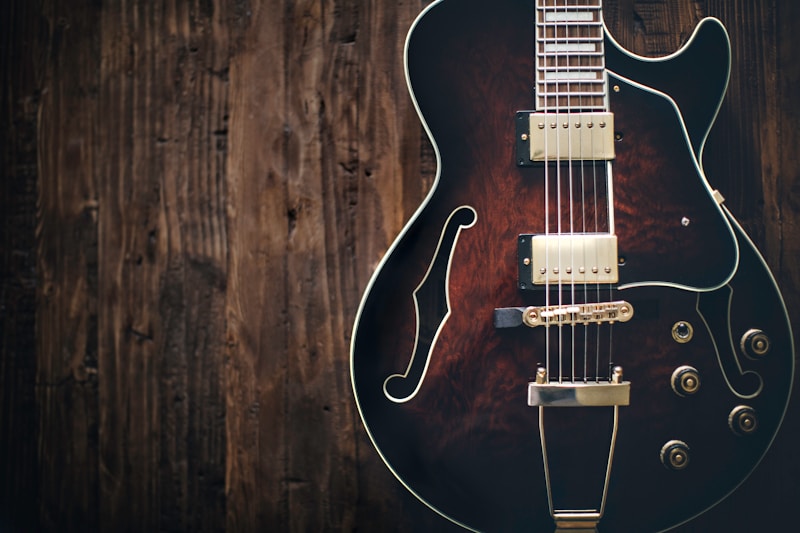Podcast
Questions and Answers
Which musical form became popular during the Classical era and typically consists of three movements in a fast-slow-fast sequence?
Which musical form became popular during the Classical era and typically consists of three movements in a fast-slow-fast sequence?
Which of the following characteristics is often associated with Romantic music?
Which of the following characteristics is often associated with Romantic music?
Which composer is known for being the world's first rockstar?
Which composer is known for being the world's first rockstar?
What is the characteristic of Modern music?
What is the characteristic of Modern music?
Signup and view all the answers
What is the term for playing instruments or singing in unusual, unconventional ways?
What is the term for playing instruments or singing in unusual, unconventional ways?
Signup and view all the answers
What is the typical feature of a Tone poem?
What is the typical feature of a Tone poem?
Signup and view all the answers
Which musical term refers to the use of multiple simultaneous meters?
Which musical term refers to the use of multiple simultaneous meters?
Signup and view all the answers
Who is known as the Father of the Operetta?
Who is known as the Father of the Operetta?
Signup and view all the answers
What is the term for music that doesn't use harmony or scales?
What is the term for music that doesn't use harmony or scales?
Signup and view all the answers
In the context of textile art, what does the concept of 'soul' refer to?
In the context of textile art, what does the concept of 'soul' refer to?
Signup and view all the answers
What is the main purpose of soulmaking, according to John Keats?
What is the main purpose of soulmaking, according to John Keats?
Signup and view all the answers
What is the primary characteristic of Baroque music that distinguishes it from earlier musical styles?
What is the primary characteristic of Baroque music that distinguishes it from earlier musical styles?
Signup and view all the answers
What is the term for the ability to embrace uncertainty and doubt without reaching for absolutes?
What is the term for the ability to embrace uncertainty and doubt without reaching for absolutes?
Signup and view all the answers
Which art movement is associated with unlocking the subconscious mind?
Which art movement is associated with unlocking the subconscious mind?
Signup and view all the answers
What is the name of the musical form that became popular during the Baroque era?
What is the name of the musical form that became popular during the Baroque era?
Signup and view all the answers
Which composer is associated with the Classical era?
Which composer is associated with the Classical era?
Signup and view all the answers
What is the primary medium used by Installation artists?
What is the primary medium used by Installation artists?
Signup and view all the answers
What is the characteristic of Classical music that distinguishes it from Baroque music?
What is the characteristic of Classical music that distinguishes it from Baroque music?
Signup and view all the answers
Study Notes
Sonata Form
- A popular musical form during the Classical era, typically consisting of three movements in a fast-slow-fast sequence.
Romanticism
- Emotional intensity
- Emphasis on individualism and personal expression
- Use of dramatic contrasts and heightened emotion
Ludwig van Beethoven
- Known for being the world's first rockstar, captivating audiences with his passionate performances and innovative compositions.
Modern Music
- Experimentation with dissonance, atonality, and unusual sound effects
- Rejection of traditional forms and structures
- Focus on individual expression and artistic freedom
Extended Techniques
- Playing instruments or singing in unusual, unconventional ways, like multiphonics, prepared piano, or vocalizations.
Tone Poem
- A single-movement orchestral piece inspired by a literary, historical, or visual theme
- Often features a narrative structure and vivid imagery
Polymeter
- Musical term that refers to the use of multiple simultaneous meters, creating a sense of rhythmic complexity and clash.
Jacques Offenbach
- Known as the Father of the Operetta for his witty and engaging operettas that combined music, comedy, and satire.
Atonality
- Music that doesn't use harmony or scales, creating a sense of ambiguity and disorientation.
Soul
- In textiles, it refers to the unique character and depth of expression found in hand-woven or hand-stitched fabric.
Soulmaking
- According to John Keats, the main purpose of soulmaking is to continuously strive for self-discovery and spiritual growth through artistic expression and engagement with the world.
Emphasis on Ornamentation
- Baroque music is characterized by elaborate ornamentation, dramatic contrasts, and a focus on emotional expression.
Ambiguity
- Embracing uncertainty and doubt without reaching for absolutes, allowing for multiple interpretations and perspectives.
Surrealism
- Art movement associated with unlocking the subconscious mind through dreamlike imagery, illogical juxtapositions, and automatic writing.
Concerto Grosso
- Became popular during the Baroque era
- Features a small group of solo instruments (concertino) performing against a larger ensemble (ripieno).
Wolfgang Amadeus Mozart
- Associated with the Classical era
- Known for his elegant melodies, balance, and clarity.
Space
- The primary medium used by Installation artists to create immersive and interactive environments, often incorporating light, sound, and objects.
Emphasis on Clarity and Balance
- Classical music differs from Baroque music by its focus on clarity, balance, and formal structure, often emphasizing melodic beauty and elegant expression.
Studying That Suits You
Use AI to generate personalized quizzes and flashcards to suit your learning preferences.
Description
Test your knowledge of classical and modern music forms, including concerto and tone poem. Learn about the characteristics and evolution of music from the Classical era to the present day. Explore the differences between classical and modern music compositions.





